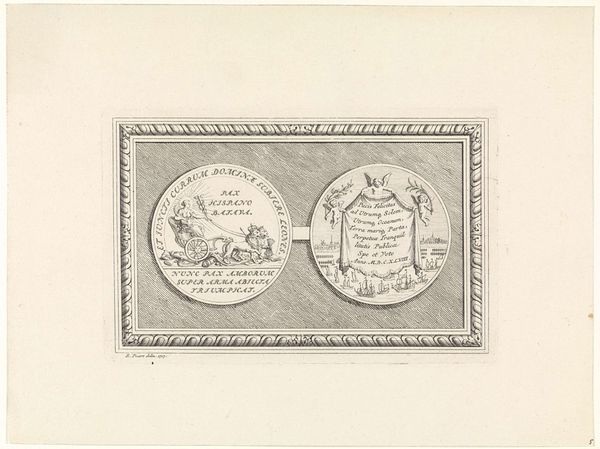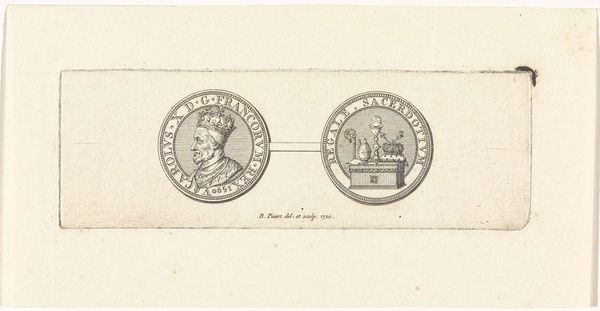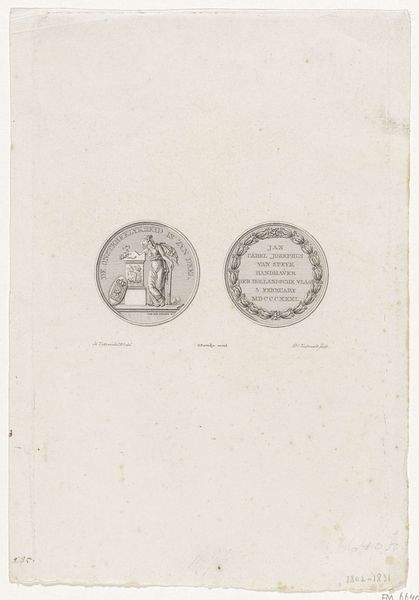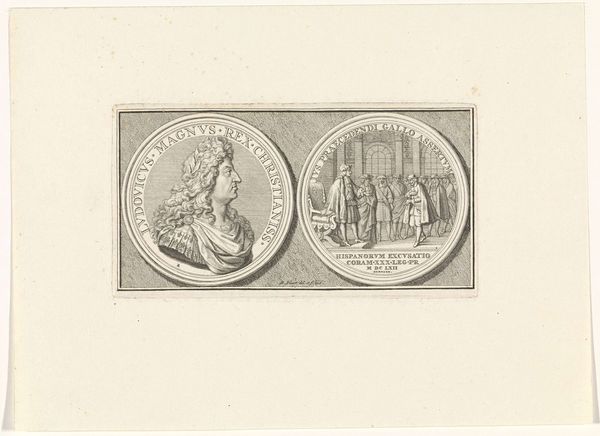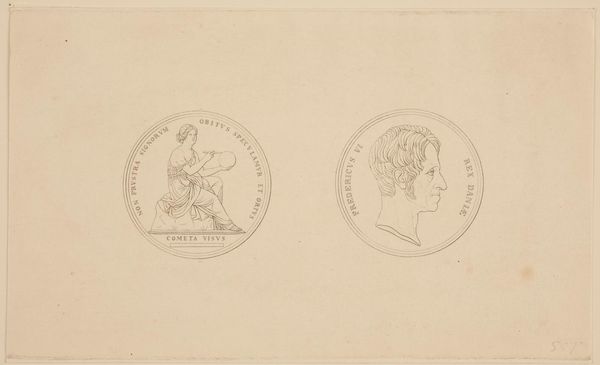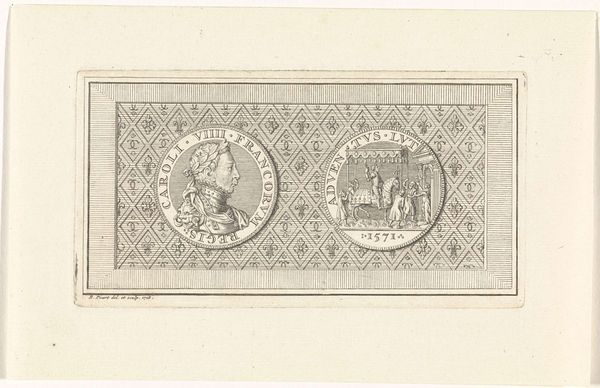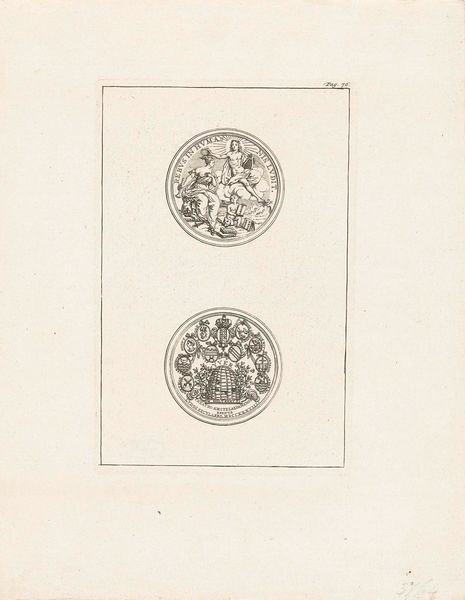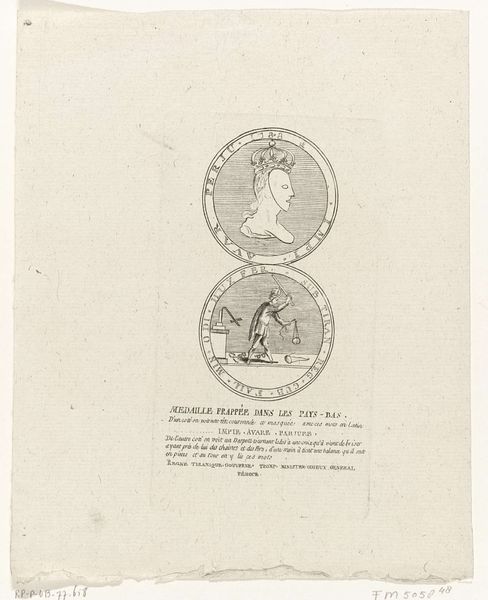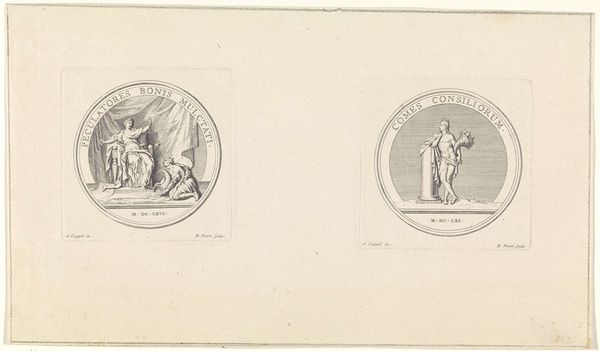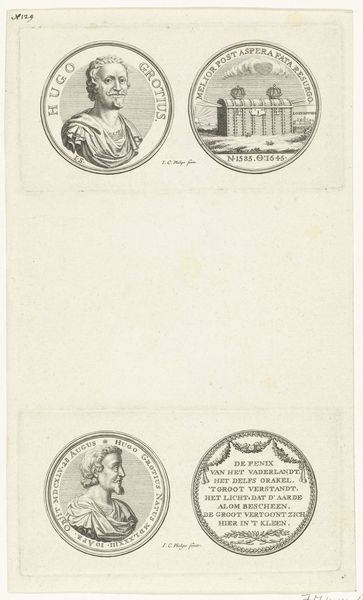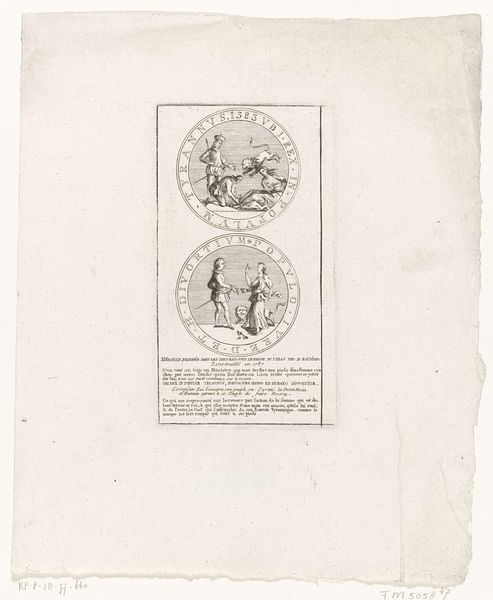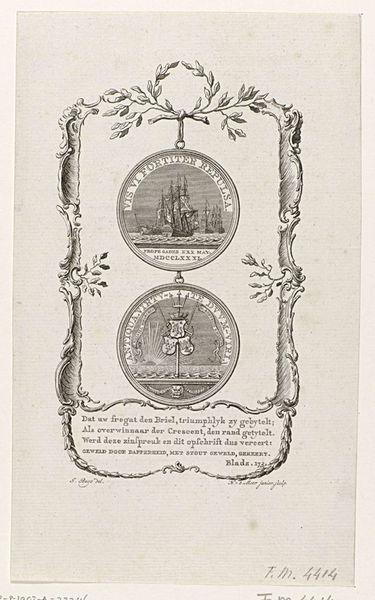
Gedenkpenning uitgereikt aan vrijwillige jagers van de Leidse Hogeschool, 23 September 1831 1831
0:00
0:00
drawing, print, engraving
#
medal
#
drawing
# print
#
old engraving style
#
classical-realism
#
figuration
#
line
#
history-painting
#
engraving
Dimensions: height 230 mm, width 140 mm
Copyright: Rijks Museum: Open Domain
Curator: This artwork, rendered in engraving, is entitled "Gedenkpenning uitgereikt aan vrijwillige jagers van de Leidse Hogeschool, 23 September 1831," created by Leendert (I) Springer in 1831. It commemorates a medal given to volunteer hunters from Leiden University. What’s your immediate take on it? Editor: Stark. The visual austerity creates a sense of gravity. The crisp lines and contrasting light and shadow contribute to its solemn, commemorative nature. I’m also struck by the division of space into the two distinct circular medallions. Curator: The medal itself speaks to the socio-political context of the time. The early 1830s in the Netherlands was a period of tension, particularly in relation to what would become Belgium. Volunteer militias were formed in response to the Belgian Revolution. This medal, therefore, wasn’t just a decorative object but a symbol of civic duty and national pride among university students. Editor: The figuration certainly aligns with classical-realism, particularly in the lower medallion, which appears to depict a female figure holding a wreath and staff, perhaps representing virtue or victory. The deliberate linearity emphasizes the purity of form, lending an almost idealized quality to the scene. Curator: Indeed. The upper medallion’s inscription, though not perfectly legible, alludes to “Leidse Jonkvrouwen” - the young women of Leiden - and notions of “fatherland’s love and heroism.” These medals, then, served to publicly honor the sacrifices made by these young men, casting them in a heroic light. It also highlights the supporting role of women in that society. Editor: The symbolism strikes me. The laurel wreath, the classical figure, all point to enduring ideals of honor and patriotism. The print’s reliance on the strength of line alone strips it down to its most essential visual elements. Curator: And what do you make of that engraving style given its historical context? I see it working on multiple levels; while reflecting a sense of nostalgia and respect for classical values, it simultaneously communicated patriotic values, and this kind of civic engagement would have been important for maintaining national unity and purpose in times of uncertainty. Editor: Looking at it again, that clarity lends itself to the sense of order and purpose it clearly attempts to instill. It transcends being just a visual document to becoming a testament to form following function so adeptly. Curator: Precisely, a compelling intersection of historical event, social symbolism, and visual representation that encapsulates its period. Editor: A beautifully rendered object. I find myself contemplating how formal choices contribute so deeply to imbuing objects, even those as seemingly straightforward as medals, with cultural meaning.
Comments
No comments
Be the first to comment and join the conversation on the ultimate creative platform.
